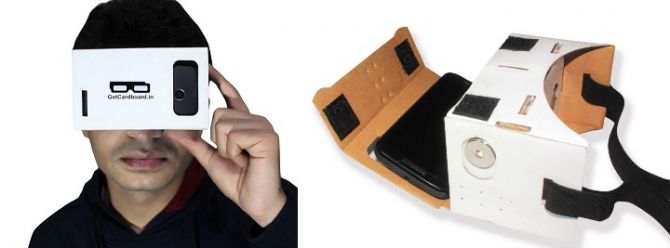
Gazematic, a start-up based in Bengaluru, has built an application that allows smartphone users with a virtual reality headset to get a virtual experience of tourist locations such as Goa and Paris.
The videos are six to seven minutes each.
“With everything going digital, people want experiential digital content.
"The new products (in terms of hardware) are creating a lot of excitement.
"With no clear market leader, big and smaller companies are trying to capture the spot,” says Karthikeyan NG, the 28-year-old founder of Gazematic.
The company is less than two months old and has a little over 2,000 experiences of destinations available on its app.
Third Eye is a VR headset that Ploud, another Bengaluru start-up, is building.
Raghu Venkatesh, founder, says his next generation neuro VR headset allows a person wearing it to dream consciously and to try to bring changes in their mood.
The device, still under development, has a chip that touches the skull, can sense a user’s specific mood by capturing brain signals and offers experiences, altering that mood.
For example, if a person wearing the VR headset is under stress, it captures the mood and throws experiences that are soothing.
“VR is a design thinking revolution. Everytime there is a revolution in design thinking, it becomes a revolution or a new era.
"This time, it is in terms of immersive experience. The last one was the touchscreen revolution,” said Venkatesh.
The device is expected to hit the market by next year.
VR is not a new concept but with Google Cardboard making the platform open source and enabling it for smartphones, this helped the concept take off.
YouTube has launched its 360-degree view videos that allow users to get an immersive experience.
In 2014, Facebook acquired Oculus Rift, a VR tech firm that it intends to work with partners such as Samsung and several other phone makers.
A January 2016 report by consultancy Deloitte says the sector would see its first billion-dollar revenue this year, with about $700 million in hardware sales and the remainder from content.
The biggest driver would be video games, which will see high- end VR headsets.
CB Insights, a firm into predictive analytics of data, said last week that investments in VR the past six months had risen by 85 per cent to $1.3 billion, compared to the whole of 2015.
This year, 76 firms in the segment got investments from privately equity and venture capital investors, it said.
The biggest was $793 million for Magic Leap, a US start-up that is building a head-mounted virtual retinal display -- this superimposes 3D computer-generated images over real world objects, by projecting a digital light field into the user’s eye.
Ploud founder Venkatesh says VR would see rapid adoption in education, health care and tourism but it’s still difficult to convince Indian investors about this opportunity.
"Investors in India are yet not well versed in this technology.
"However, big companies have started entering into the space.
"The only way to help start-ups bring unique products in this field is funding before the big companies capture the space," he says.
In Mumbai, Xenium, an interactive digital agency that helps customers create VR content, is launching a VR lounge later this month.
It will enable general users and its clients to experience VR and that could bring more business.
“In the past one year, there has been a huge growth in affordable VR hardware entering the markets.
"With this, there has also come a huge demand for VR content creation.
The demand is where the scope of this year lies.
"This will be used extensively in the fields of learning and training, as well as in the movie industry,” said Parveez Nasyam, managing director at Xenium. The firm doubled its annual revenue to Rs 6 crore (Rs 60 million) last year.
WEB OF IMAGINATION
- Several start-ups are looking at virtual reality as a global opportunity
- Gazematic delivers content on its smartphone app for users to get a VR experience
- Deloitte says 2016 will see VR’s first one-bn dollar business
- In six months of 2016, VR firms saw 85% jump in investments to $1.3 bn
The image is used for representational purpose only.











